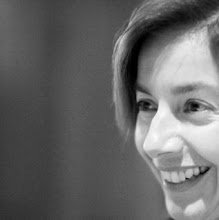For greater mindfulness, one can heed the Buddha's advice and go to the cemetery:
(1) And further, monks, as if a monk sees a body dead one, two, or three days; swollen, blue and festering, thrown in the charnel ground, he then applies this perception to his own body thus: "Verily, also my own body is of the same nature; such it will become and will not escape it."
Thus he lives contemplating the body in the body internally, or he lives contemplating the body in the body externally, or he lives contemplating the body in the body internally and externally. He lives contemplating origination-factors in the body, or he lives contemplating dissolution factors in the body, or he lives contemplating origination-and-dissolution-factors in the body. Or his mindfulness is established with the thought: "The body exists," to the extent necessary just for knowledge and mindfulness, and he lives detached, and clings to nothing in the world. Thus also, monks, a monk lives contemplating the body in the body.
(2) And further, monks, as if a monk sees a body thrown in the charnel ground, being eaten by crows, hawks, vultures, dogs, jackals or by different kinds of worms, he then applies this perception to his own body thus: "Verily, also my own body is of the same nature; such it will become and will not escape it."
Thus he lives contemplating the body in the body...
(3) And further, monks, as if a monk sees a body thrown in the charnel ground and reduced to a skeleton with some flesh and blood attached to it, held together by the tendons...
(4) And further, monks, as if a monk sees a body thrown in the charnel ground and reduced to a skeleton blood-besmeared and without flesh, held together by the tendons...
(5) And further, monks, as if a monk sees a body thrown in the charnel ground and reduced to a skeleton without flesh and blood, held together by the tendons...
(6) And further, monks, as if a monk sees a body thrown in the charnel ground and reduced to disconnected bones, scattered in all directions_here a bone of the hand, there a bone of the foot, a shin bone, a thigh bone, the pelvis, spine and skull...
(7) And further, monks, as if a monk sees a body thrown in the charnel ground, reduced to bleached bones of conchlike color...
(8) And further, monks, as if a monk sees a body thrown in the charnel ground reduced to bones, more than a year-old, lying in a heap...
(9) And further, monks, as if a monk sees a body thrown in the charnel ground, reduced to bones gone rotten and become dust, he then applies this perception to his own body thus: "Verily, also my own body is of the same nature; such it will become and will not escape it."
` The Nine Cemetery Contemplations, from Satipatthana Sutta: The Foundations of Mindfulness `
Or one can spend time in an old age home, or a hospice, and witness day after day, the inevitable deterioration of body and (often) mind, that comes with death approaching.
Hence, coming to the same deep realization:
Hence, coming to the same deep realization:
Truly, also my own body is of the same nature; such it will become and will not escape it . . .
Truly, also my own mind is of the same nature; such it might very well become . . .
Service work, it's good for the ones we serve. It's also one of the most powerful spiritual practices to help one attain freedom from greed, hate and delusion.




I think it is so easy for us, even when we are frequently with the ill and dying, to envision that as a lesser state; to avoid identifying with by having compassion for. To accept another being's status and condition and to be able to see ourselves in that place is true com-passion and a clearer view of reality. Thanks for reminding us to engage, to be mindful of all conditions and to embrace our oneness.
ReplyDeleteYes, delusion can only work for so long. Eventually, the reality of old age and dying and death will catch up with us. Personally, I prefer to be prepared, and open to the freedom from clinging to that which is so unreliable. This body, this mind, this flimsy view of self . . .
ReplyDelete